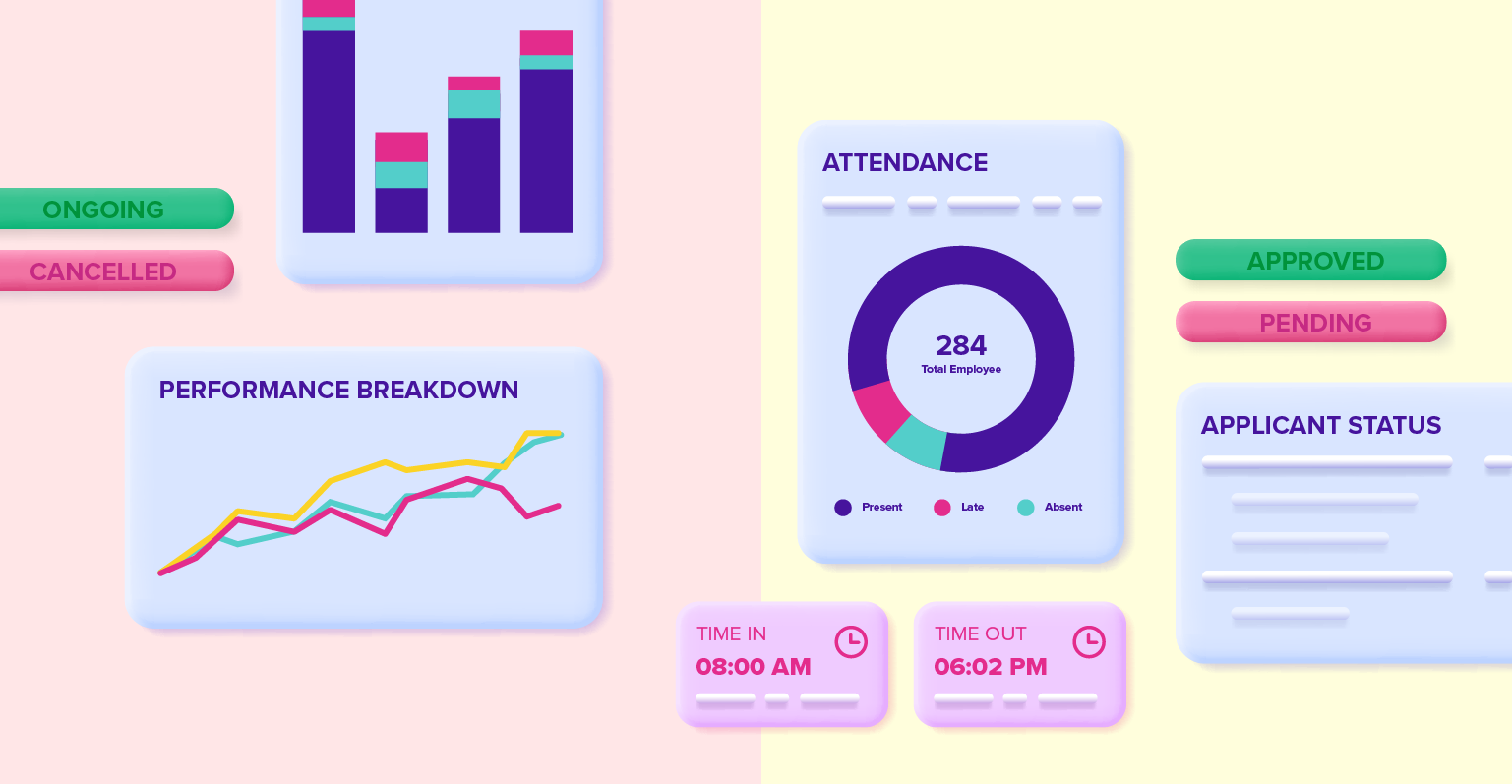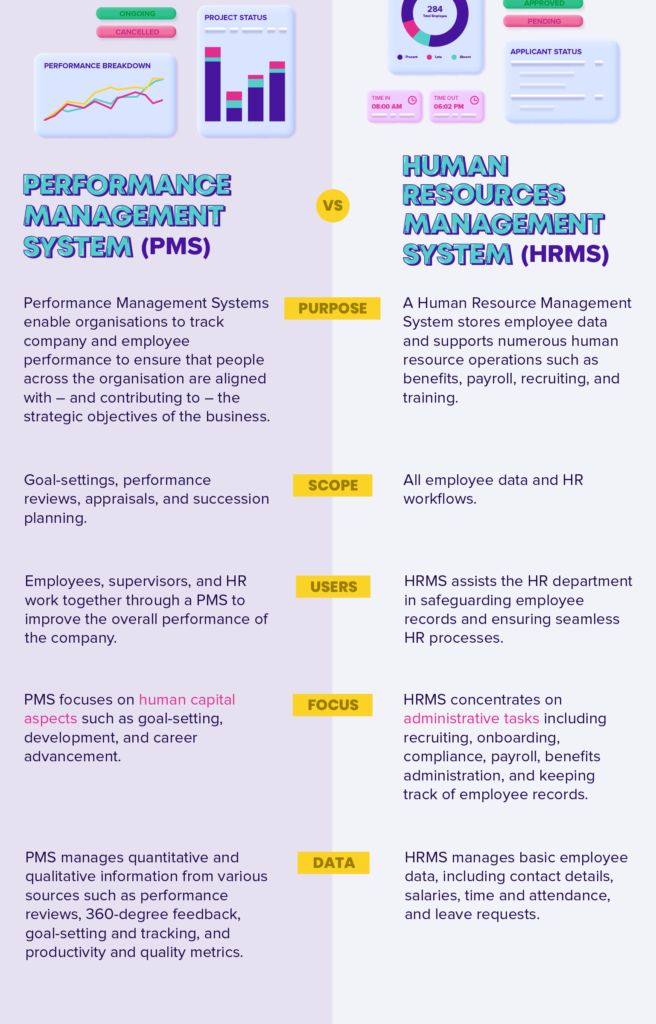An Infographic: Performance Management System (PMS) vs. Human Resource Management System (HRMS)

Performance Management Systems have become critical to organisational success in today’s fast-paced and competitive corporate environment. It enables businesses to establish clear expectations for employees’ responsibilities, competencies, and growth in order to foster engagement, productivity, and excellence across the workforce.
Since performance management systems are concerned with the day-to-day operations of both the business and its employees, they are always linked to the human resource management system (HRMS), which also automates and manages all business and employee-related data.
However, while many individuals believe that these tools are both the same, they serve quite varied functions in corporate management. Let’s check out the infographics below!
In conclusion, organisations use performance management systems to obtain a competitive advantage on strategically using human capital through alignment, motivation, and growth. Simultaneously, the Human Resources management system automates operations and organises employee information, eliminating the need for paper documents and making operations more efficient and productive.
While PMS and HRMS have separate operational and performance objectives, they both work to deliver end-to-end solutions for managers, HR professionals, and of course employees! We hope that we have clarified the differences between these two management systems so that you can determine whether the one you are using fits the bill, or what type of system your organisation requires.On a hunt for past data for reviewing your employee performance? Say goodbye to tedious spreadsheets and data errors! Get real-time data and automated reports with our Performance Management System! Get a quote now!
Related Topics

Yes or No: Does your business need a Learning Management System (LMS)?
Test out this interactive flowchart to decide whether you need...

Learning Management System: What’s the Role of Artificial Intelligence?
In an era where the use of artificial intelligence is...

Incorporating Universal Design for Learning Principles to Online Education
Examine how to integrate Universal Design for Learning into your...

Universal Design for Learning: A Beginner’s Guide
Learn about the Universal Design for Learning and its three...

The Concept of Green Digital Learning Campus
As the globe prioritises eco-friendly practises to save our planet,...
